Abstract
PURPOSE: This study investigates: 1) perceptions of clergy regarding their current counseling and the need for future programs concerning sexual risk-taking, 2) sexual risk behaviors among a group of African-American women, 3) women's attitudes regarding condom use, and 4) women's receptiveness to church programs regarding sexual risks. METHODS: The clergy of 50 randomly selected predominantly African-American churches in five North Carolina counties were contacted regarding participation. Female parishioners ages 18-30 from participating churches were invited to complete written surveys concerning women's health. RESULTS: Of 50 clergy repeatedly contacted, 38 declined to participate and eight did not complete the interview. Only four interviews could be completed. Counseling regarding sexual risk was not common among the four clergy. They often advised parishioners to practice abstinence. Survey data was received from 142 respondents at 14 churches. Nearly 84% of the women surveyed had a history of sexually transmitted diseases (STDs). Almost all of the respondents were receptive to a church program regarding sexual risks. CONCLUSIONS: Despite the sexual risks among African-American women, in this study, many clergy were unwilling to address prevention and were uncomfortable discussing issues related to sexual health. However, the few clergy who agreed to participate were very receptive to future programs.
Full text
PDF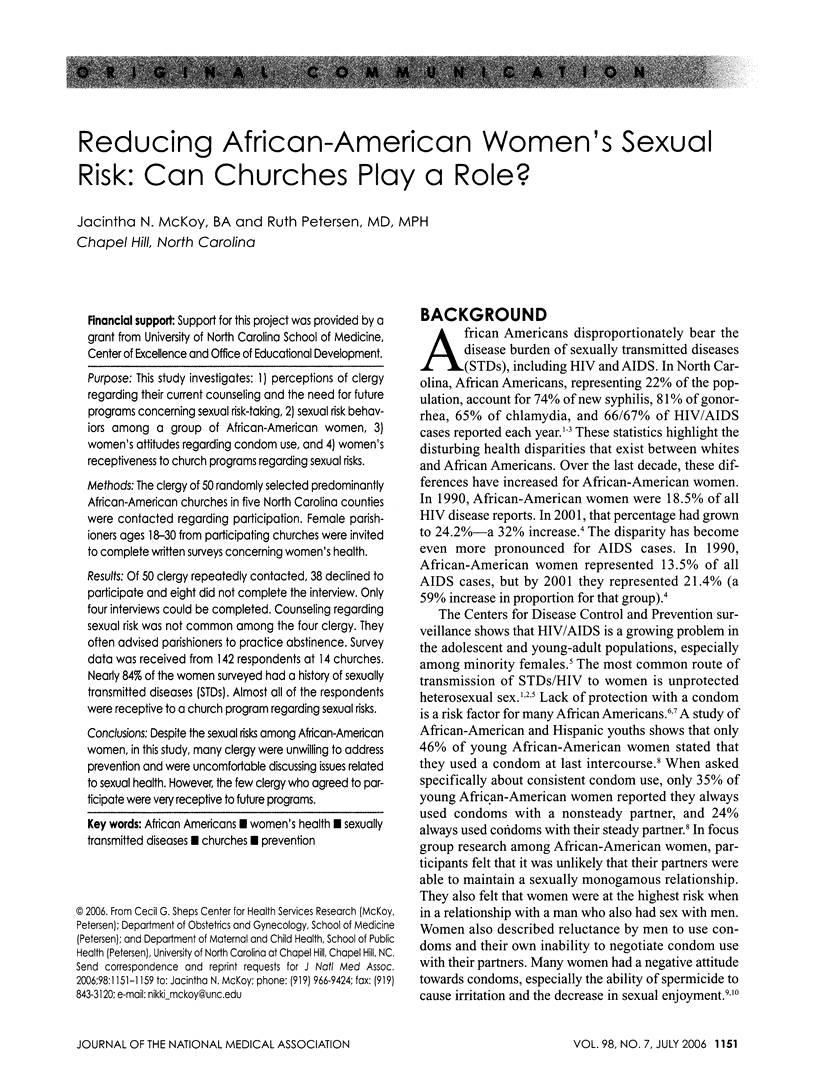
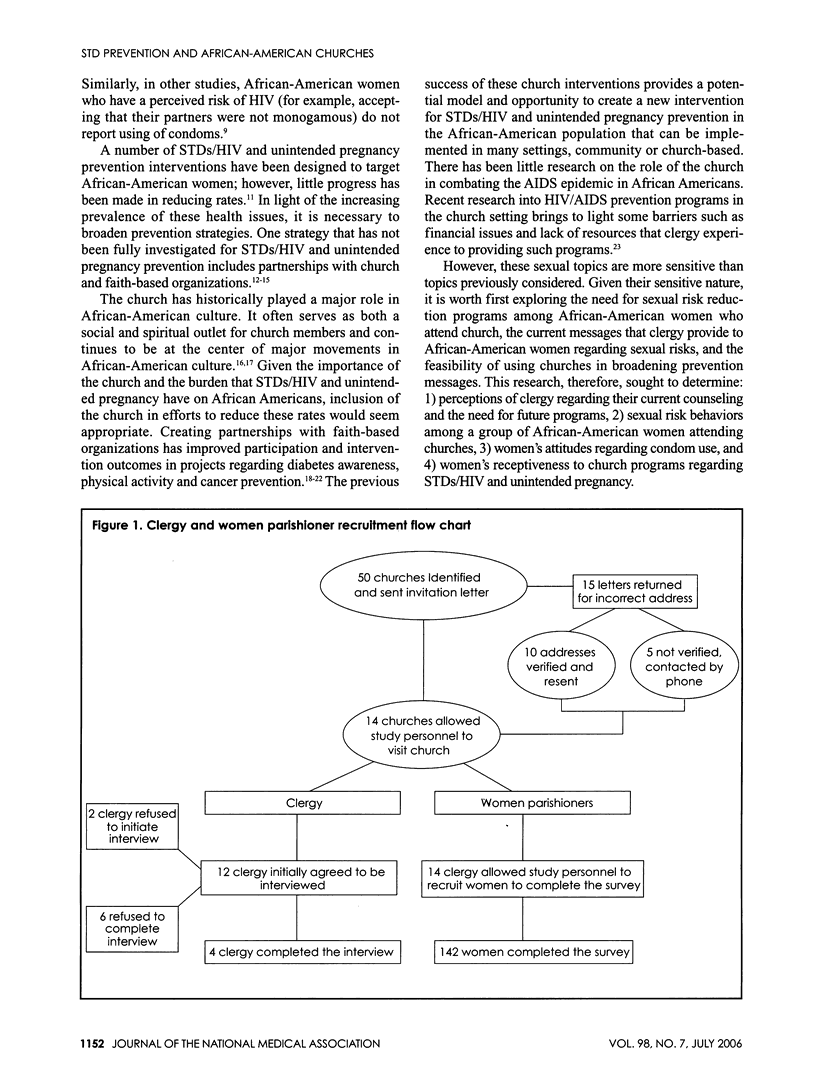
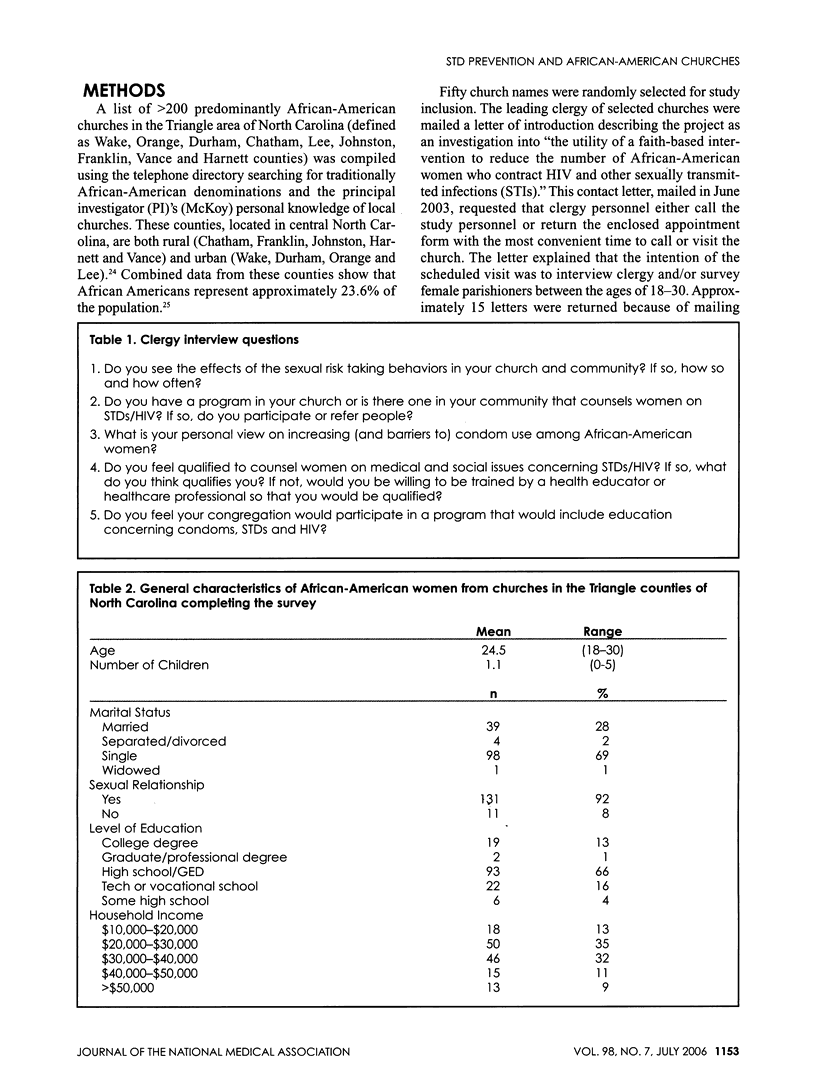
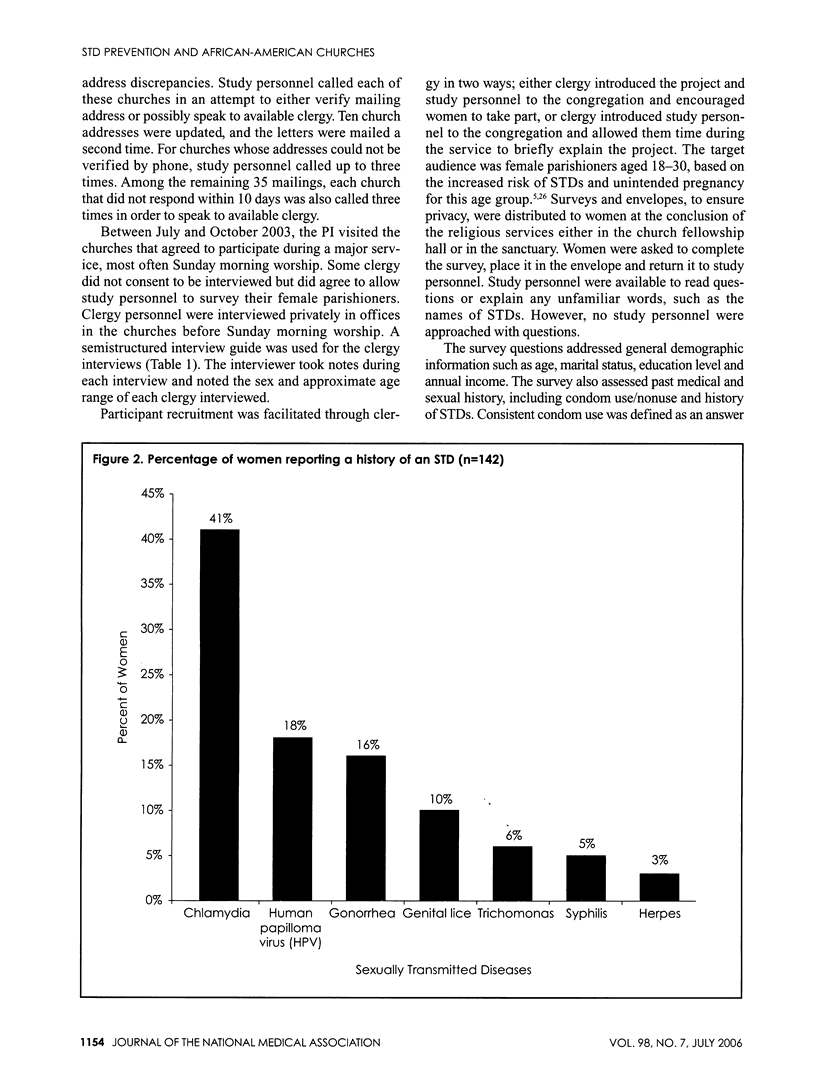
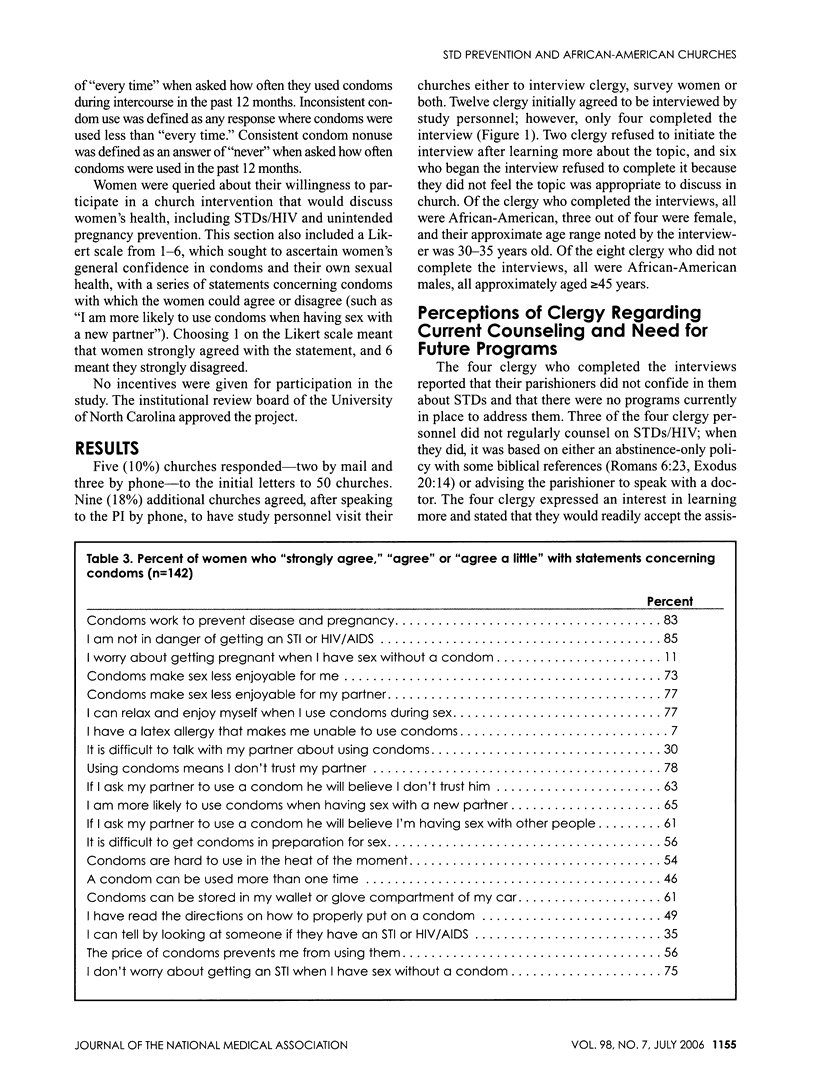
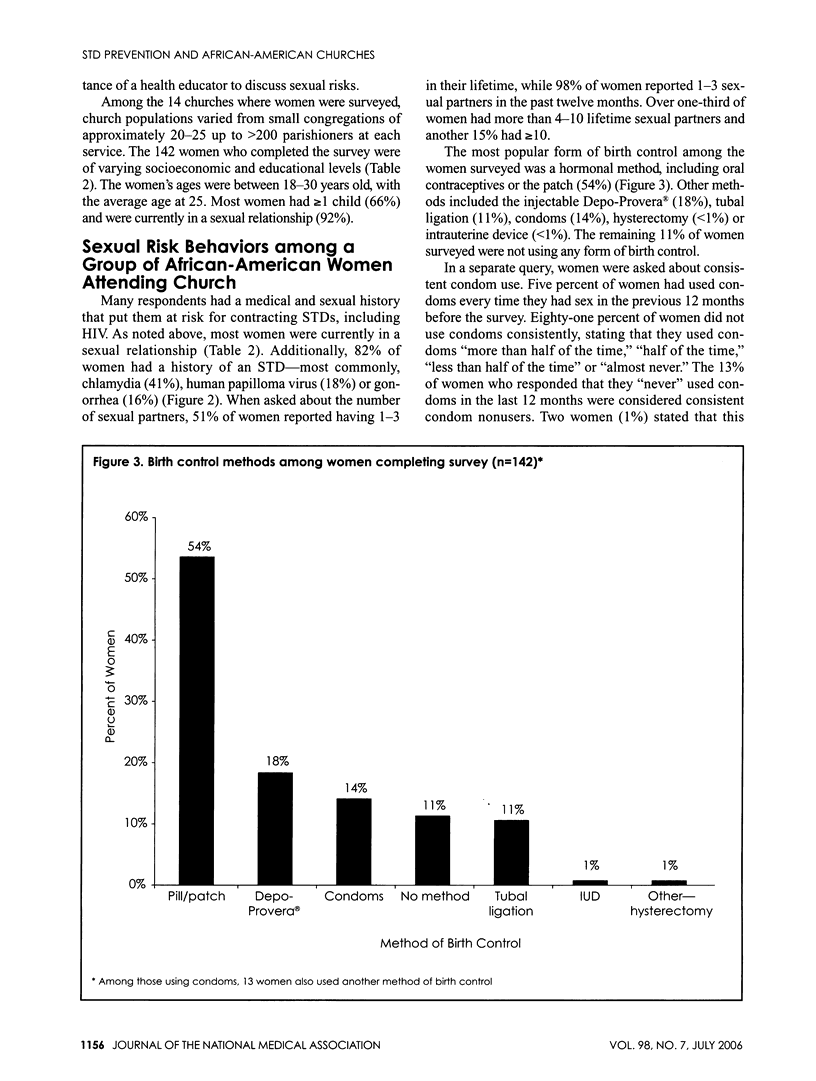
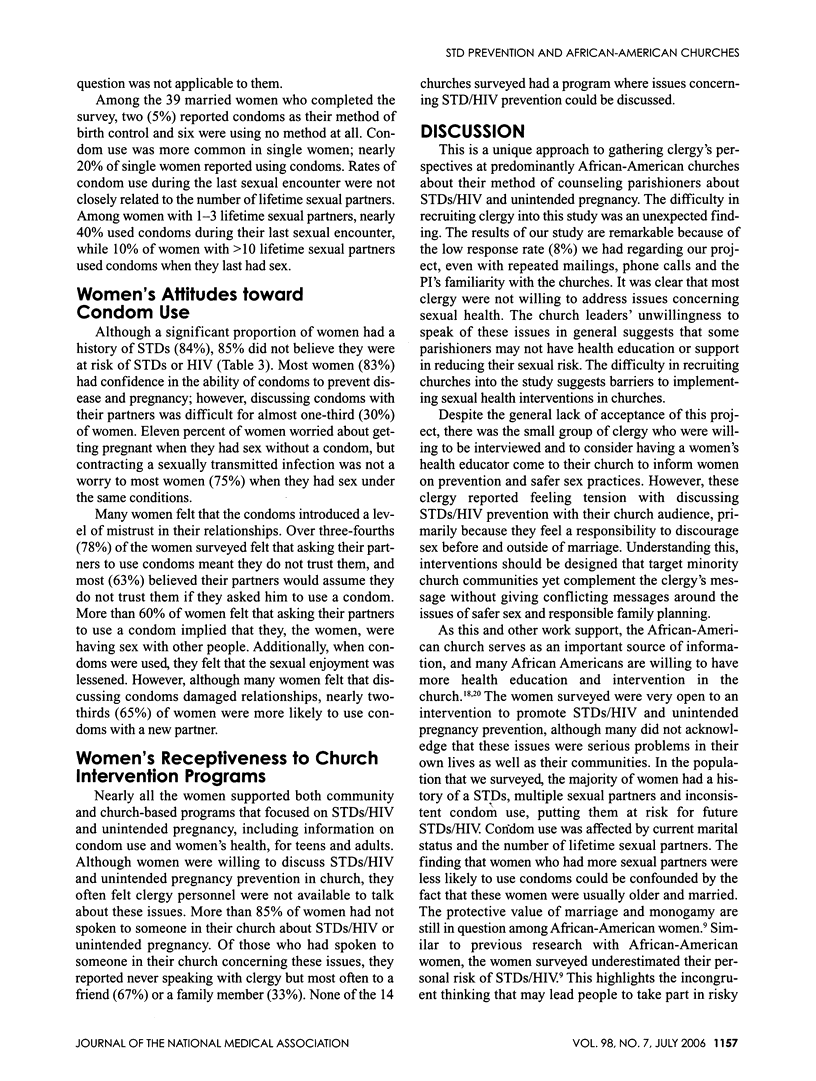
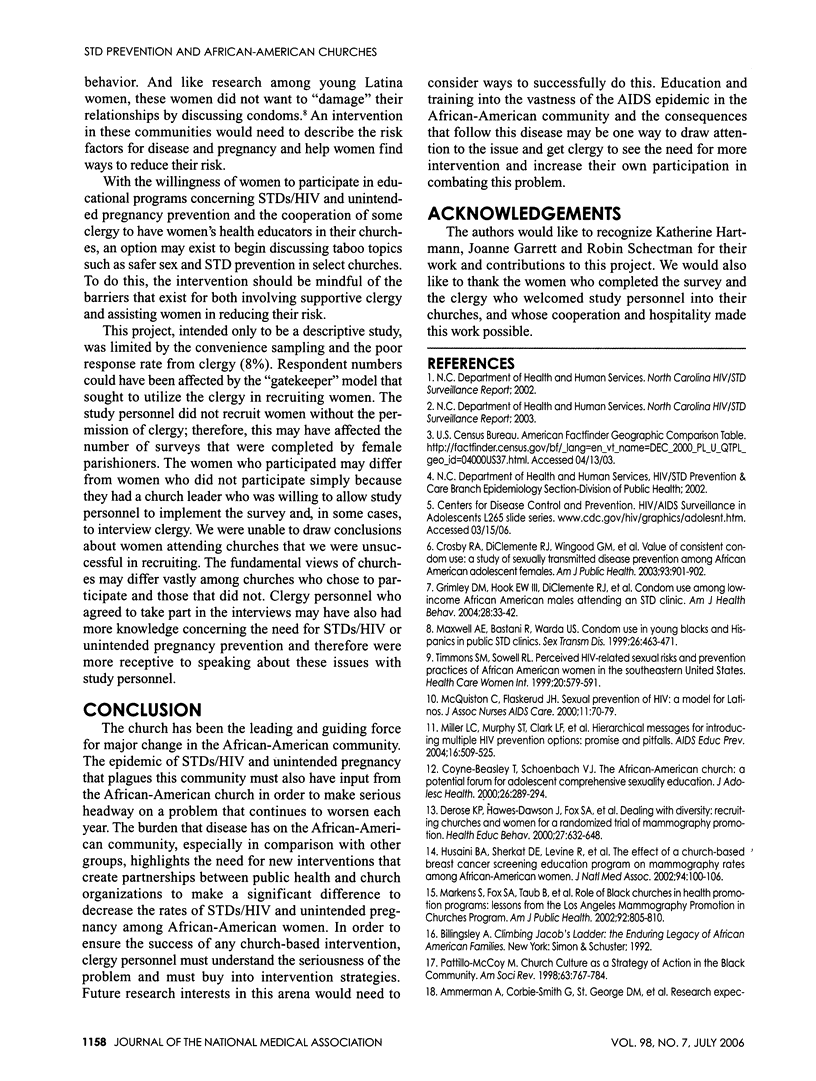
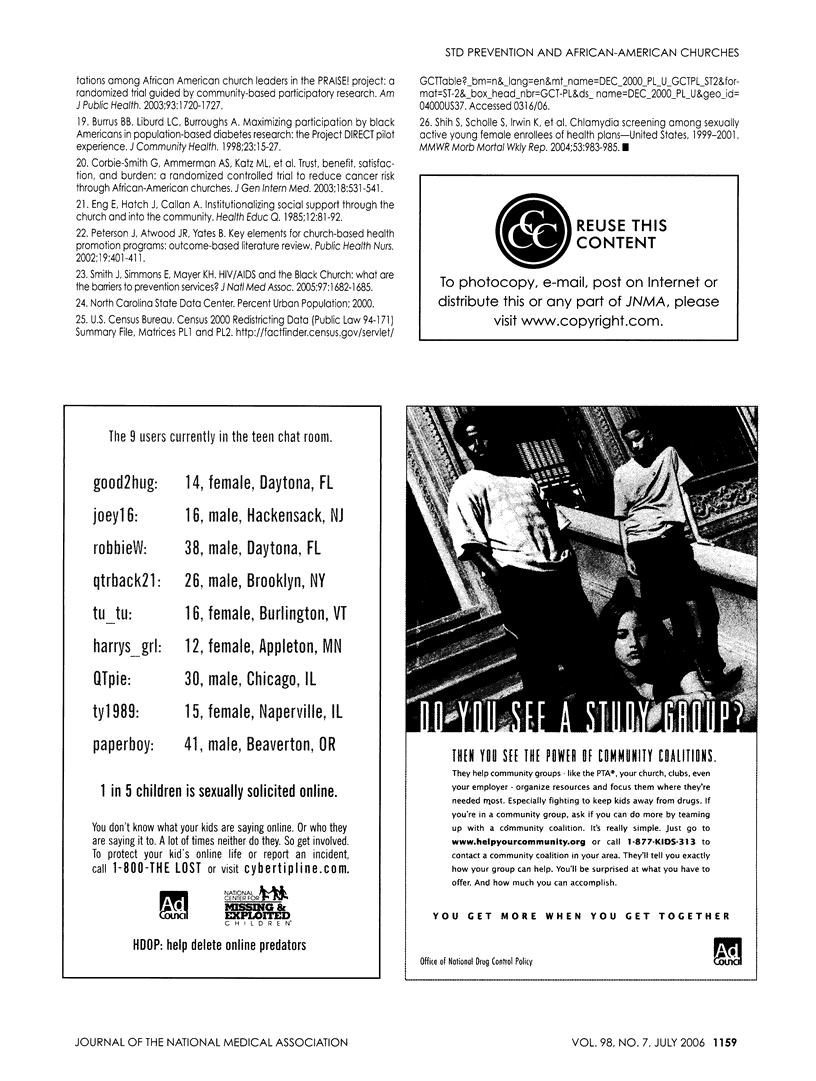
Selected References
These references are in PubMed. This may not be the complete list of references from this article.
- Burrus B. B., Liburd L. C., Burroughs A. Maximizing participation by black Americans in population-based diabetes research: the Project DIRECT pilot experience. J Community Health. 1998 Feb;23(1):15–27. doi: 10.1023/a:1018718803890. [DOI] [PubMed] [Google Scholar]
- Centers for Disease Control and Prevention (CDC) Chlamydia screening among sexually active young female enrollees of health plans--United States, 1999-2001. MMWR Morb Mortal Wkly Rep. 2004 Oct 29;53(42):983–985. [PubMed] [Google Scholar]
- Corbie-Smith Giselle, Ammerman Alice S., Katz Mira L., St George Diane Marie M., Blumenthal Connie, Washington Chanetta, Weathers Benita, Keyserling Thomas C., Switzer Boyd. Trust, benefit, satisfaction, and burden: a randomized controlled trial to reduce cancer risk through African-American churches. J Gen Intern Med. 2003 Jul;18(7):531–541. doi: 10.1046/j.1525-1497.2003.21061.x. [DOI] [PMC free article] [PubMed] [Google Scholar]
- Coyne-Beasley T., Schoenbach V. J. The African-American church: a potential forum for adolescent comprehensive sexuality education. J Adolesc Health. 2000 Apr;26(4):289–294. doi: 10.1016/s1054-139x(99)00097-x. [DOI] [PubMed] [Google Scholar]
- Crosby Richard A., DiClemente Ralph J., Wingood Gina M., Lang Delia, Harrington Kathy F. Value of consistent condom use: a study of sexually transmitted disease prevention among African American adolescent females. Am J Public Health. 2003 Jun;93(6):901–902. doi: 10.2105/ajph.93.6.901. [DOI] [PMC free article] [PubMed] [Google Scholar]
- Derose K. P., Hawes-Dawson J., Fox S. A., Maldonado N., Tatum A., Kington R. Dealing with diversity: recruiting churches and women for a randomized trial of mammography promotion. Health Educ Behav. 2000 Oct;27(5):632–648. doi: 10.1177/109019810002700508. [DOI] [PubMed] [Google Scholar]
- Eng E., Hatch J., Callan A. Institutionalizing social support through the church and into the community. Health Educ Q. 1985 Spring;12(1):81–92. doi: 10.1177/109019818501200107. [DOI] [PubMed] [Google Scholar]
- Grimley Diane M., Hook Edward W., 3rd, DiClemente Ralph J., Lee Patricia A. Condom use among low-income African American males attending an STD clinic. Am J Health Behav. 2004 Jan-Feb;28(1):33–42. doi: 10.5993/ajhb.28.1.4. [DOI] [PubMed] [Google Scholar]
- Husaini Baqar A., Sherkat Darren E., Levine Robert, Bragg Richard, Van Cain A., Emerson Janice S., Mentes Christina M. The effect of a church-based breast cancer screening education program on mammography rates among African-American women. J Natl Med Assoc. 2002 Feb;94(2):100–106. [PMC free article] [PubMed] [Google Scholar]
- Markens Susan, Fox Sarah A., Taub Bonnie, Gilbert Mary Lou. Role of Black churches in health promotion programs: lessons from the Los Angeles Mammography Promotion in Churches Program. Am J Public Health. 2002 May;92(5):805–810. doi: 10.2105/ajph.92.5.805. [DOI] [PMC free article] [PubMed] [Google Scholar]
- Maxwell A. E., Bastani R., Warda U. S. Condom use in young blacks and Hispanics in public STD clinics. Sex Transm Dis. 1999 Sep;26(8):463–471. doi: 10.1097/00007435-199909000-00008. [DOI] [PubMed] [Google Scholar]
- McQuiston C., Flaskerud J. H. Sexual prevention of HIV: a model for Latinos. J Assoc Nurses AIDS Care. 2000 Sep-Oct;11(5):70–79. doi: 10.1016/S1055-3290(06)60386-5. [DOI] [PubMed] [Google Scholar]
- Miller Lynn Carol, Murphy Sheila T., Clark Leslie F., Hamburger Merle, Moore Jan. Hierarchical messages for introducing multiple HIV prevention options: promise and pitfalls. AIDS Educ Prev. 2004 Dec;16(6):509–525. doi: 10.1521/aeap.16.6.509.53788. [DOI] [PubMed] [Google Scholar]
- Peterson Jane, Atwood Jan R., Yates Bernice. Key elements for church-based health promotion programs: outcome-based literature review. Public Health Nurs. 2002 Nov-Dec;19(6):401–411. doi: 10.1046/j.1525-1446.2002.19602.x. [DOI] [PubMed] [Google Scholar]
- Smith Justin, Simmons Emma, Mayer Kenneth H. HIV/AIDS and the Black Church: what are the barriers to prevention services? J Natl Med Assoc. 2005 Dec;97(12):1682–1685. [PMC free article] [PubMed] [Google Scholar]
- Timmons S. M., Sowell R. L. Perceived HIV-related sexual risks and prevention practices of African American women in the southeastern United States. Health Care Women Int. 1999 Nov-Dec;20(6):579–591. doi: 10.1080/073993399245476. [DOI] [PubMed] [Google Scholar]


